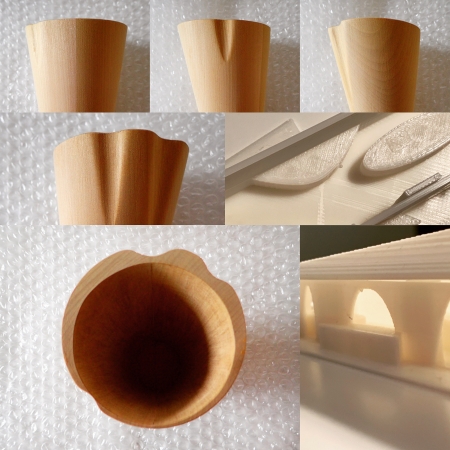穴があったら
穴があったら入りたい、と同じ気持ちなのだろうか。
穴も空間の一種、素材の空隙だと考えるならば、空間は素材の違いを色濃く反映するだろう。
例えば、大きな木の塊をくり抜いた穴の空間は、同じく大きな石の中をくり抜いた穴の空間と空間の大きさや形が同じでも受ける印象が全く違うものになるだろう。
さらに、同じ木でも棒のような木材を組み上げて穴ような空隙をつくる場合と、平らな板状の木材を立て掛けるようにつくった穴のような空隙もまた違う印象になるだろう。
同じ素材でも、素材自体の形が変われば、空間の印象も変わる。それは単純でミニマムな空間ほど顕著であり、より素材の違いを反映する。
だから、ミニマムな空間をつくる時、まず最初に考えるのは、何でつくるか、素材が頭に浮かび、次に素材に合わせたデザインを考える、穴があったら入りたくなるように。
"If there is a hole"
Is it the same feeling that I want to enter if there is a hole?
If you think of a hole as a kind of space, a void in the material, the space will strongly reflect the difference in the material.
For example, the space of a hole hollowed out from a large block of wood will give a completely different impression even if the size and shape of the space are the same as the space of a hole hollowed out in the same large stone.
Furthermore, even if the same wood is used, the impression of a hole-like void made by assembling stick-like wood and a hole-like void made by leaning a flat plate-shaped wood will give a different impression.
Even with the same material, if the shape of the material itself changes, the impression of the space will also change. It is more noticeable in a simple and minimal space, and more reflects the difference in materials.
Therefore, when creating a minimal space, the first thing to think about is what to make, the material comes to mind, then the design that matches the material, so that if there is a hole, you will want to enter.


